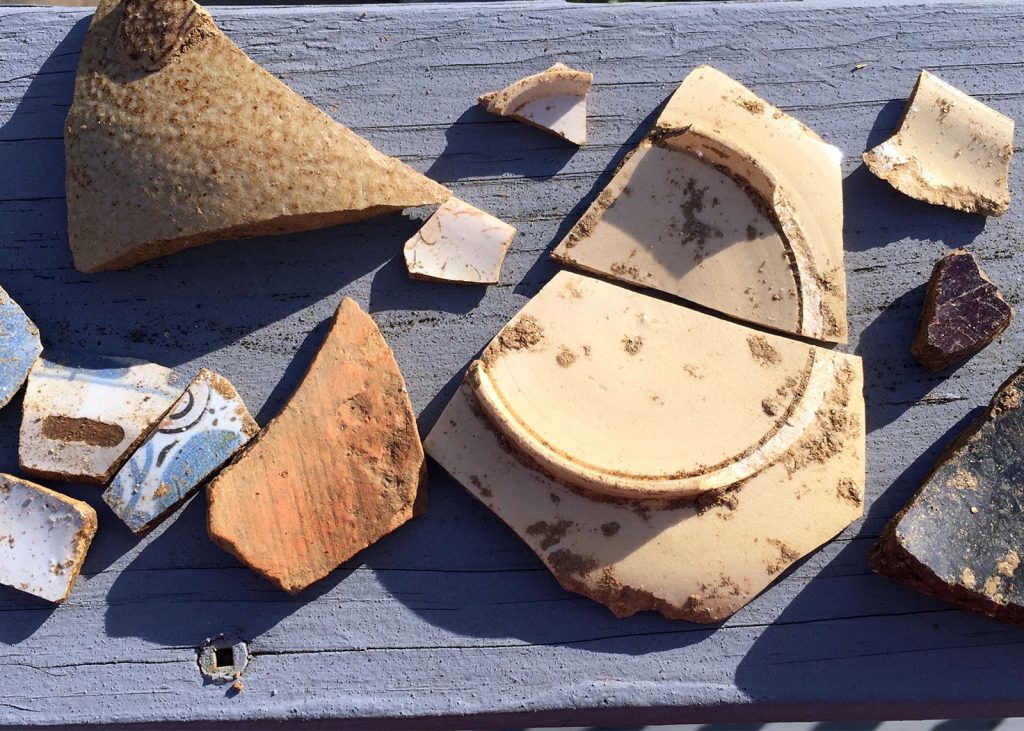Thanks to Lisa Kraus and Jason Shellenhamer for this update from day 4 of the Herring Run Archaeology Project. You can find their updates on our blog, the project website, and on Facebook. You can also subscribe to the project email list to read these posts in your inbox.
Today was a very exciting day! Up at the manor house, we identified a new architectural feature—a possible gravel pathway—which may help us answer one of our more pressing questions: which way did the house face? In the Peale painting of William Smith and his grandson, the house appears to face west, but it is difficult to tell. With this new feature and other clues, we hope to piece together a more complete picture of the house and grounds.
In other news: from the very beginning, we’ve found traces of an earlier occupation at the site, and we know that John Broad and his family occupied from 1690 (and likely earlier) through the 1740s. Today, we’ve finally found intact deposits associated only with this earlier occupation!
We know very, very little about life in this region at that time, so this is a tremendous discovery—and this makes Eutaw the earliest historical archaeological site in Baltimore City to date!

